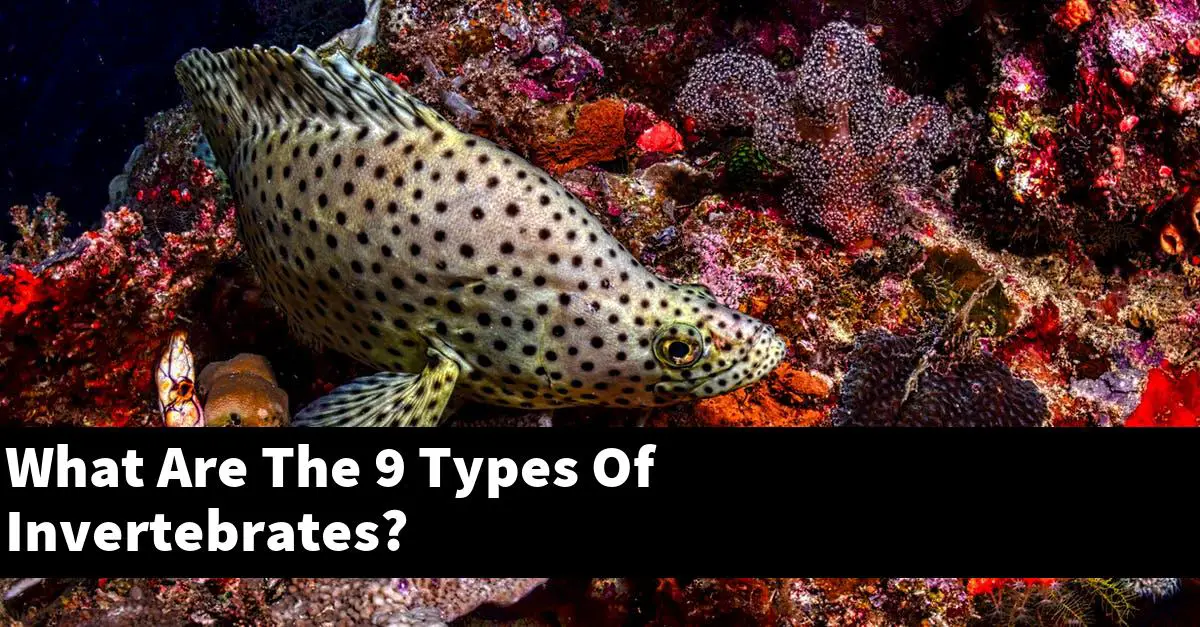Invertebrates are animals that lack a backbone. There are over a million known species of invertebrates, which is about 95% of all animal species.
The nine major groups of invertebrates are mollusks, arthropods, echinoderms, chordates, annelids, cnidarians, flatworms, nematodes, and rotifers.
What are the 5 types of invertebrates?
There are five types of invertebrates: arthropods, mollusks, nematodes, annelids, and chordates.
What are the 5 characteristics of invertebrates?
The five characteristics of invertebrates are that they have a segmented body, they have a bilateral symmetry, they have a centralized nervous system, they have a cephalon or head, and they have a thorax or chest.
Fluval Bug Bites Bottom Feeder Fish Food, Granules for Small to Medium Sized Fish, 1.60 Oz., A6586
$3.81 (as of June 25, 2025 22:11 GMT +03:00 - More infoProduct prices and availability are accurate as of the date/time indicated and are subject to change. Any price and availability information displayed on [relevant Amazon Site(s), as applicable] at the time of purchase will apply to the purchase of this product.)Ultum Nature Systems Ultra Clear Rimless Aquarium - Low Iron Glass Fish Tank with 45° Mitered Edges, 5mm-15mm Thick, Leveling Mat Included - 16S, 5mm Glass (6.29x6.29x3.14IN | 16x16x8CM)
$32.99 (as of June 25, 2025 22:22 GMT +03:00 - More infoProduct prices and availability are accurate as of the date/time indicated and are subject to change. Any price and availability information displayed on [relevant Amazon Site(s), as applicable] at the time of purchase will apply to the purchase of this product.)Boyd Enterprises CPGNnano5 Chemi-Pure Green Nano 5 Pack Aquarium Filtration
15% OffHow many groups of invertebrates are there?
There are around 18,000 different invertebrate species on Earth.
What are 10 invertebrate animals?
Invertebrates are animals that lack a backbone or spinal column. This includes things like jellyfish, spiders, and insects.
Some invertebrates, like sea stars, are able to move around by flexing their muscles. Others, like flatworms, have no muscles at all and simply move along by contracting and relaxing their cells.
Invertebrates make up the majority of all animal species on Earth, and there are literally thousands of different invertebrates. Here are ten of the most common invertebrates:
1. Spiders
Spiders are one of the most common invertebrates on Earth. They are small, but they are very diverse, with over 35,000 different species.
Spiders are famous for their web spinning, but they also eat insects and other spiders.
2. Crabs
Crabs are a very common invertebrate. They live in all kinds of environments, from the ocean floor to fresh water.
Crabs can be very large, and some species are even eaten by humans.
3. Jellyfish
Jellyfish are some of the most beautiful animals in the world. They are simple creatures, with no bones or organs.
Jellyfish are mostly aquatic, but some species live on land.
4. Sea Stars
Sea stars are one of the most unique invertebrates. They are able to move around by flexing their muscles, and they can even twirl their arms in a spiral.
sea stars are very important in the marine ecosystem, and they are sometimes eaten by humans.
5. Annelids
Annelids are a group of invertebrates that includes worms, leeches, and spiders. Annelids have a segmented body, and they are able to change the color and texture of their skin.
6. Nematodes
Nematodes are one of the most diverse groups of invertebrates. They are tiny, but they are very diverse.
Nematodes can be found in all kinds of environments, from the ocean to the soil.
7. Arachnids
Arachnids are a group of invertebrates that includes spiders, scorpions, and ticks. Arachnids have a segmented body, and they are able to spin webs.
8. Cnidarians
Cnidarians include jellyfish, coral, and anemones. Cnidarians are able to sting prey, and they are very important in the marine ecosystem.
9. Mollusks
Mollusks are a group of invertebrates that includes snails, clams, and octopuses. Mollusks have a hard outer shell, and they are able to move around using their tentacles.
10. Annelidflatworms
What is the 8 groups of invertebrates?
Invertebrates are a large and diverse group of animals that lack a backbone. They include everything from tiny water droplets to massive sea creatures.
There are eight major invertebrate groups, which are listed below.
1. Crustaceans
2. Arachnids
3. Crustacean mollusks
4. Annelids
5. Mollusks
6. Echinoderms
7. Chordates
8. Vertebrates
Are mollusks invertebrates or vertebrates?
Mollusks are invertebrates, as they have a bilateral symmetry and lack a backbone. However, many mollusks are capable of movement, and some mollusks, such as the squid, can even form ink sacs and exhibit advanced intelligence.
Therefore, mollusks can be considered vertebrates, albeit in a limited sense.
What are the major invertebrate groups?
There are three major invertebrate groups: arthropods, mollusks, and chordates. Arthropods include insects, arachnids, and crustaceans.
Mollusks include clams, snails, and squid. Chordates include fish, amphibians, and reptiles.
What are the main types of invertebrate?
There are three main types of invertebrates: crustaceans, arthropods, and mollusks. Crustaceans are the largest group and include crabs, shrimp, and krill.
Arthropods include insects, spiders, and centipedes. Mollusks include clams, oysters, and squid.
What are 5 examples of invertebrates?
Invertebrates are a group of animals that lack a backbone. They include things like worms, insects, and spiders.
Invertebrates can be found all over the world and include a wide range of animals. Some of the most common invertebrates include bugs, moths, and butterflies.
What is the difference between vertebrates and invertebrates?
Vertebrates are animals with a backbone, like humans and other animals with a spinal cord. Invertebrates are animals without a backbone, like jellyfish and worms.
Conclusion
There are 9 types of invertebrates: mollusks, arthropods, echinoderms, sponges, cnidarians, flatworms, annelids, rotifers, and nematodes.









![[High Clarity Glass] Crafted with 91% clarity Diamant glass, this rimless tank offers unparalleled visibility with minimal green color distortion, providing you with a clear and unobstructed view of your aquascape tank. [Durable Craftsmanship] Constr...](https://m.media-amazon.com/images/I/4147deXLasL._SL160_.jpg)










